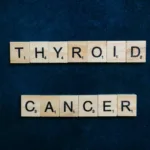Starting Ozempic at a 1 mg dose is not recommended. If you are planning to lose weight fast, you don’t need to harm yourself.
Starting Ozempic at a 1 mg dose is like starving for one week and not eating at all. You will definitely lose weight, but at the cost of serious health issues.
What is the usual starting dose of Ozempic?
The manufacturer recommends starting Ozempic in a dose of 0.25 mg (one-fourth of the 1 mg dose) once weekly. The dose is then increased to 0.5 mg per week for four more weeks.
After you have been on 0.5 mg for four weeks, you can then increase the dose to 1 mg per week.
So, you need to wait a minimum of two months or 8 weeks until you get on the 1 mg dose.
Why can’t you start 1 mg directly?
Ozempic is a GLP-1 analog. It acts on your stomach and pancreas. It reduces your hunger, makes you feel full, stops your stomach from moving the food forward, and enhances the release of insulin.
You need to start the dose at 0.25 mg so that your stomach gets used to it. Not only your stomach but your body gets used to the effects of Ozempic.
If you are starting Ozmepic at a 1 mg dose, you are exposing yourself to the side effects of Ozempic, some of which may be very serious.
Here are a few of the side effects that you may experience:
Severe stomach upset:
The most common side effects are nausea, vomiting, constipation, diarrhea, and abdominal pain. When you start Ozempic at a dose of 0.25 mg, your stomach gets used to it, and you don’t feel most of these side effects even when you increase the dose.
In addition, during the first four weeks, you adjust your diet and physical activities according to your level of tolerance.
If you start Ozempic at a 1 mg dose, your body is not used to it, and you may develop severe symptoms of nausea, vomiting, and abdominal pain.
You may need hospitalization, intravenous fluids, and antacids to heal your stomach.
Dehydration:
Dehydration can develop because of severe GI upset (nausea, vomiting, and diarrhea) or you may not feel like eating and hence slowly become volume-depleted.
Dehydration can damage your kidneys, especially if you already have impaired kidney function.
Pancreatitis:
Pancreatitis is a severe side effect of all GLP-1 analogs. It may be life-threatening. Starting Ozempic at 1 mg may increase your risk greatly since your pancreas is suddenly stressed out.
If you develop abdominal pain, vomiting, and feel sick, you may need to check your amylase and lipase levels and visit your doctor.
Hypoglycemia:
Hypoglycemia is a side effect of Ozempic if you are also taking a sulfonylurea or using Insulin. Because Ozempic enhances insulin release, the risk of hypoglycemia is always there. Even if you are not on other diabetes medications, you may still develop hypoglycemia.
Symptoms of hypoglycemia include feelings of hunger, tremors, shakiness, dizziness, sweating, and palpitations.
Retinopathy:
Ozempic retinopathy is a serious complication of all potent diabetes medications. It can occur with Insulin and other diabetes drugs, however, it is more common with medications that are very potent and lower blood glucose rapidly.
Ozempic retinopathy may be more rapid if you have significant fluctuations in your blood glucose as when you start Ozempic at 1 mg directly.
In addition, if you have developed a lump in the neck and have a risk factor of developing medullary thyroid cancer, you may develop rapid enlargement and swelling of the neck mass.
Although this is a rare condition, but since it can be very serious, you need to take precautions to prevent or avoid its occurrence even if the risk is 1 in 10000 per person.
Your professional may consider starting Ozempic at a 1 mg dose:
Although there haven’t been any dosing recommendations recommended by the manufacturer, starting Ozempic at 1 mg may be reasonable in certain situations, such as:
- If you are on Tirzepatide (Mounjaro) at a dose of 10 mg or above and you want to switch to Ozempic, your healthcare professional may directly switch you to 1 mg since you are already using a GLP-1 and your body has been used to it.
- Suppose you are on Victoza and using 1.8 mg daily. Victoza is another GLP-1 analog. If you are on Victoza, your body is used to the effects of GLP-1, and hence, your doctor may switch you directly to either 0.5 mg (preferred) or 1 mg Ozempic.
- If you are on 1.5 mg Trulicity (Dulaglutide) or high doses of Lixisenatide.
These are not manufacturer-recommended guidelines but are reasonable choices. However, starting Ozempic at 1 mg should be avoided unless your doctor prescribes you.
- Alli is an approved weight loss pill that helps block about 25 percent of the fat you eat from being absorbed
- Acts as an effective WEIGHT LOSS pill for both Women and men
- For every 5 pounds you lose through diet and exercise, alli can help you lose 2 to 3 more

- SKIN FRIENDLY DESIGN FOR COMFORT crafted with materials that are gentle and breathable the patch adheres smoothly to var…
- NATURAL INGREDIENTS FORMULA made with a thoughtful blend of white peony cinnamon ginger wormwood and cinnamon bark each …
- EASY DAILY APPLICATION PROCESS requires just a clean and dry abdominal area before placing the patch apply before bedtim…

- 12-in-1 Weight Management Formula: MuseBeam 12-in-1 GLP-1 Weight Loss Probiotic Capsules deliver a robust 1500 mg blend …
- Supports Natural GLP-1 Activation and Metabolic Balance: MuseBeam Glp1 Weight Loss Supplement for Women and Men includes…
- 1 Billion CFU Probiotics + Prebiotic Inulin: MuseBeam 12-in-1 GLP-1 Probiotic features 1 Billion CFU from six well-studi…







